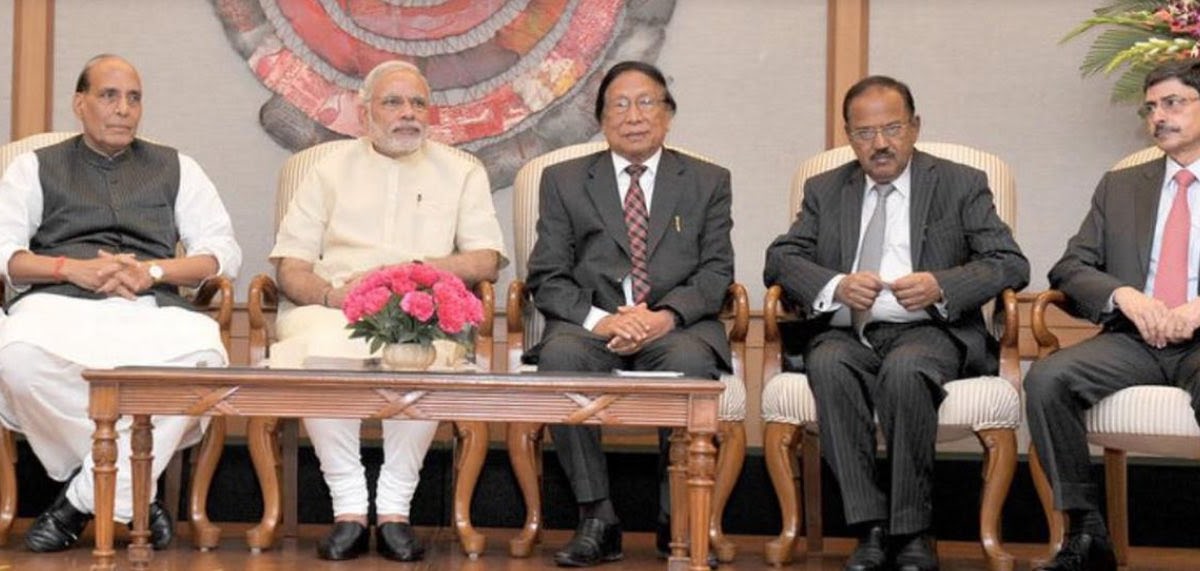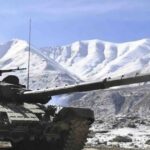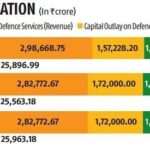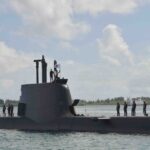
For 25 years, the Naga underground has had a ceasefire with the government, but little peace as Naga factions fight each other (above: Prime Minister Narendra Modi with NSCN-IM General Secretary T Muivah in New Delhi in 2015)
By Vikas Gupta
Trading Standard, 20 Sep 22
Central government officials are due to meet with members of the main underground Naga group on Tuesday, to resume talks on the stalled Naga peace process.
For the past 25 years, there has been a ceasefire between the Government of India (GoI) and the largest Naga separatist group – the faction led by Isak Swu and Thuingaleng Muivah of the Socialist Nationalist Council of Nagaland (known as NSCN -IM). Meanwhile, underground Naga factions have been killing each other in a fratricidal struggle for power and extortion rights.
Nagaland has always been a battleground for the 35 Naga tribes. From the middle of the 19ecentury, they fought to a standstill against the British armies seeking to control the Naga Hills. In 1956 they took up arms against the Indian Army in the country’s longest running insurgency.
One hour from the state capital, Kohima, at the entrance to the village of Khonoma, is a commemorative plaque engraved with 46 names — all the inhabitants of this village who died fighting the Indian army. Near Khonoma is the village of Nerhema, which celebrates one of its sons, Captain N Kenguruse of the Indian Army, who won a Mahavir Chakra at Kargil, giving his life fighting for India.
To New Delhi’s credit, it intervened proactively in Nagaland, unlike in Jammu and Kashmir where it remained politically passive. In June 1995, Prime Minister PV Narasimha Rao met Muivah and Swu of NSCN-IM in Paris. HD Deve Gowda met with NSCN-IM in Zurich in February 1997, which led to the May 1997 ceasefire. IM.
Nonetheless, violence has rocked the region. In June 2015, a Naga ambush killed 18 people and injured another 18 Indian soldiers. The Indian army retaliated by crossing into Myanmar and attacking the Naga underground camps. With dialogue having resumed with the Nagas, Prime Minister Narendra Modi announced a peace agreement in Nagaland in August 2015.
In the ongoing talks, the NSCN-IM has dropped two key demands: a sovereign Nagaland with its own constitution, army and currency; and the integration of all Naga-inhabited areas, including neighboring states of Manipur, Assam and Arunachal Pradesh.
The breakthrough came when Swu and Muivah accepted that it was impossible to peel off territory from Manipur, Arunachal Pradesh and Assam to create a “Greater Nagaland”, or Nagalim. Even if New Delhi agreed to this, Articles 3 and 4 of the Constitution of India oblige the legislatures of the states concerned to adhere to the proposal.
The NSCN-IM therefore opted for an autonomous administrative mechanism for the Naga inhabited areas, of the type already created for other hill areas, such as the autonomous Ladakh Hill Development Councils created for Leh and Kargil. In the long term, the NSCN-IM could hope for a Nagalim through the mechanism of a state reorganization commission, as was done in the 1950s.
Since then, the NSCN-IM has resented successive special interlocutors – RN Ravi and AK Mishra, both former Intelligence Bureau officials – for omitting important policy concessions that New Delhi allegedly made. These include granting Nagaland its own flag and anthem and will form a large part of the meeting’s agenda.






